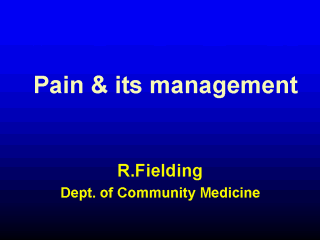| front |1 |2 |3 |4 |5 |6 |7
|8 |9 |10 |11 |12 |13 |14 |15 |16 |17 |18 |19 |20 |21 |22 |23 |24 |review |
 |
Synopsis: Almost all of us know
pain when we feel it, but do we know what pain is? We understand very little about pain,
even after a century or more of careful and intensive study. The current fashion of trying
to explain everything by reducing it to its component parts overlooks an important
dimension of all complex subjective experience, namely that what makes us people are our
interactions with others and the way we “interface” with the world. For humans,
symbols are crucially important and pain has a powerful symbolic dimension: we know it
causes suffering and we fear it - it means trouble. While there is no doubt the mechanics
(or chemistry) of neuronal activity in the transmission of signals is associated with
sensation, this still tells us almost nothing about what pain is. Trying to explain pain
only by reference to neuronal function is like trying to explain why a television
programme is funny by explaining how transistors and capacitors in the TV set work. Even
if you could describe the electrical characteristics of the whole TV set, it still would
be far short of explaining why the content of the programme it displays has the effect it
does. Part of the problem is the confusion, or lack of precision of the terminology that scientists and lay people use when talking about this subject. When most scientists refer to pain, they are really referring to sensation, which is not the same thing. This lecture looks at pain from a psychological perspective and postulates a perceptual model for this range of phenomena we know as pain. |